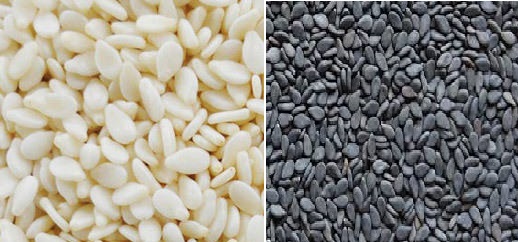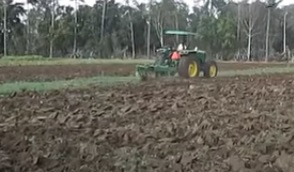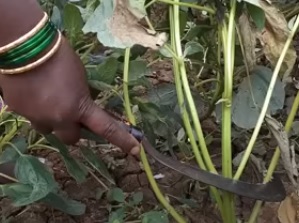Cultivation of Sesame ( Til) ; A complete Farming Guide
Cultivation of Sesame ( Til); A complete Farming Guide
Sesame ( Sesamum indicum L.) belongs to the family Pedaliaceae, commonly known as til, is one of the important edible seed crops cultivated in India. It is grown in the country since antiquity. India is a major producer of this crop in the world and occupies well over 36 % of total acreage and contributes about 25 % of the total output.
Origin and History Sesame Crop;
Sesame has been under cultivation in India since ancient times. It can be called one of the earliest domesticated plants. In Atharva Veda Samhita, dating 2500-1400 B.C. sesamum originated in south-western Africa, where all the wild and cultivated species of the genus sesamum are found to occur. From there it might have come into India through Malayan and Indonesian regions probably before the Aryans came into this country.
Usage of Sesame Seeds (Til )Seeds;
Nutrient Value of Sesame;
|
Component’s |
Value |
Component’s |
Value |
|
Calories |
572 kcal |
Dietary Fibers |
12 g |
|
Total Fat |
50 g |
Sugar |
0.3 g |
|
Saturated Fat |
7 g |
Protein |
18 g |
|
Sodium |
11 mg |
Calcium |
975 mg |
|
Total Carbohydrate |
23 g |
Iron |
14.55 mg |
|
|
|
Potassium |
468 mg |
Medicinal Importance of Sesame Seeds ;
Climatic Requirements for Sesame Cultivation ;
It is cultivated as a Kharif crop in north India but in south India, it is cultivated both in Kharif as well as Rabi seasons.
Soil Requirement for the sesame cultivation ;
Sesamum can be grown on a wide variety of soils provided they are well-drained, but it thrives best on sandy loam with adequate soil moisture. Very sandy, alkaline, and acidic soils are not suitable for its cultivation. Soils with a neutral reaction are preferred, but good results have been obtained on both slightly acidic and slightly alkaline soils. The crop will grow well in soils having a pH reaction in the range of 5.5 to 8.0. It can also be grown on loams and heavy clay loams which are well-drained.
Important Varieties of Seasame
There are two types of varieties, black-seeded and white-seeded. It is generally believed that the white-seeded varieties have a higher percentage of oil in the seed than the black-seeded ones. In India breeding work in sesamum has mostly concentrated on white-seeded varieties and consequently, a number of varieties have been evolved for commercial cultivation in the various states of the country.
|
Variety |
Oil content (%) |
Average Yield (kg/ha) Rainfed |
Recommended states/regions/situations |
Specific features |
|
TKG-306 |
49-52 |
750-800 |
Kharif , Madhya Pradesh |
Duration 86-90 days, White seed, seed weight 2.8 g, Resistant to Phytophthora blight and Moderately resistant to Macrophomina, Cercospora, powdery mildew, Alternaria leaf spot |
|
SWB-32-10-1 (Savitri) |
48-52 |
1200-1500 Summer |
Rabi/Summer, West Bengal |
Duration 84-88 days, Light brown seed, Tolerant to Macrophomina |
|
Jawahar Til –12 (PKDS-12) |
48-52 |
700-750 |
Summer, Madhya Pradesh |
Duration 82-85 days, White seed, Moderately resistant to Macrophomina stem/root rot |
|
Jawahar Til –14 (PKDS-8) |
50-53 |
700-750 |
Summer, Madhya Pradesh |
Duration 82-85 days |
|
Gujarat Til-3 |
48-52 |
750-800 |
Kharif , Saurashtra region of Gujarat |
Duration 84-88 days, White bold seed |
|
RT-346 |
49-51 |
750-850 |
Kharif , Rajasthan Haryana, Panjab,HP , Gujarat , UP,Maharashtra |
Duration 82-86 days, White seed, Resistant to leaf curl, Moderately resistant to Macrophomina, Alternaria, Cercospora |
|
PKV-NT-11 |
50-53 |
800-850 |
Summer, Vidharbha Maharashtra |
Duration 88-92 days, White seed, Moderaterly resistant to root rot , bacterial blight |
|
DSS-9 |
48-50 |
600-650 |
Zone I & II of Karnataka |
Duration 85-90 days, White bold seed, early maturing |
|
JLT-408 |
51-53 |
700-800 |
Assured rainfall zone of Khandesh and adjoining areas of Vidharba, Marathwada regiond rainfall zone of Khandesh and adjoining areas of Viddharv |
Duration 80-85 days, White seed |
|
RT-351 |
48-50 |
700-800 |
Rajasthan, Gujarat, UP, Maharashtra, Haryana, Punjab, HO, KK & J&K |
Resistant to Macrophomia, Leaf curl, Phillody, Moderately resistant to cercospora & capsule borer |
|
TKG-308 |
48-50 |
700-750 |
Madhya Pradesh (Kahrif) |
Moderately resistant to Macrophomia, Cercospora, Bacteria leaf spot, Leaf curl, Tolerant to capsul borer |
|
Shubra |
48-52 |
800-900 |
Orisha (Kharif, summer) |
Golden yellow bold seed, dalyed shattering, synchronous maturity |
|
Smarak |
46-50 |
800-900 |
Orisha (Kharif, summer) |
White seed, tolerant to leaf curl, phyllody, macrophomina, cercospora and capsule borer |
|
Gujarat til-4 |
47-49 |
750-800 |
White seed, tolerant to leaf spot |
Kharif, North Saurashtra Zone IV of Gujarat |
|
DS-5 |
49-51 |
600-700 |
White bold seed |
Kharif, summer Karnataka |
Rotations and Mixed Cropping
Kharif sesame is grown both as a pure and mixed crop. In north India, sesamum is generally grown mixed with arhar, jowar, bajra, groundnut cotton, and maize crops.
Field Preparation for Seasame Cultivation;
Seeds of sesamum are very small in size, therefore, the field must be prepared very well for good germination. The seedbed should be fine, firm, and compact. Usually, one ploughing followed by two to three harrowings followed by planking brings the field in good condition for planting.
Seed and Sowing of Sesame Crop;
a) Sowing Time; The proper time for planting sesamum under northern Indian conditions is the last week of June to the first week of July. A range of 25-27°C temperature is suitable for its proper germination. In South India, sowing time during the Kharif season may vary from May to July and for the Rabi season from October to November.
Manure and Fertilisers Requirement for Seasame Cultivation;
1)Sesamum is usually grown by small and marginal farmers on relatively poor soils with no manure and this neglect reflected in low average yields
Water Management in Seasame Crop;
Usually, there is no need to irrigate the crop but this crop is very susceptible to drought in various physiological growth stages. The crop requires about 50 centimeters of water during the entire growth period. Give first irrigation after 25-40 days of sowing. Second and third irrigations should be given at flowering and pod development stages, ie, 45 to 30 and 65-70 days after sowing. Give light irrigations on a calm and windless evening to avoid lodging. It is considered essential to irrigate at, or just after, maximum flowering in order that capsules may develop fully
Weed Control in Seasame Crop;
During Kharif season, the sesamum field is usually heavily infested with weeds. The slow initial growth of sesamum seedlings makes them poor competitors with more vigorous weeds. Therefore, in weed-infested fields, Weeding at the early stages of crop growth is essential.
Harvesting and Threshing of Sesame Crop ;
Harvest the crop, when leaves and capsules turn yellow and defoliation starts. The capsules at the base of the plants mature first and then start maturing upwards. Plants should be harvested as and when they are yellowish-brown. They should not be allowed to stand dead ripe in the field, otherwise, there would be considerable loss due to shattering. After harvest, stock the bundles erect on the threshing floor for five to seven days for drying and then thresh.
The yield of the Sesame crop
The yield fluctuates widely depending upon the varieties, method of cultivation, and weather conditions. However, if all the improved packages of practices are followed, it should be possible to obtain 8-10 quintals of seed per hectare.






